Houston, TX Pollen and Allergy Report for Summer 2023
Pollen Allergy Trends in Houston, TX
When is pollen lowest in Houston, TX?

February
Lowest month total PPM
Avg. PPM
When is pollen highest in Houston, TX?

March
Highest month total PPM
Avg. PPM
How does pollen in Houston, TX compare to Texas?
Houston has a higher average PPM than the state of Texas.
Houston yearly avg PPM:
Texas yearly avg PPM:
How does pollen in Houston, TX compare to the USA?
Houston has a higher average PPM than the USA.
Houston yearly avg PPM:
USA yearly avg PPM:
Is pollen worse this year in Houston, TX?
Spring 2023 was worse than spring 2022.
Spring 2023 PPM:
Spring 2022 PPM:
Average PPM in Houston, TX
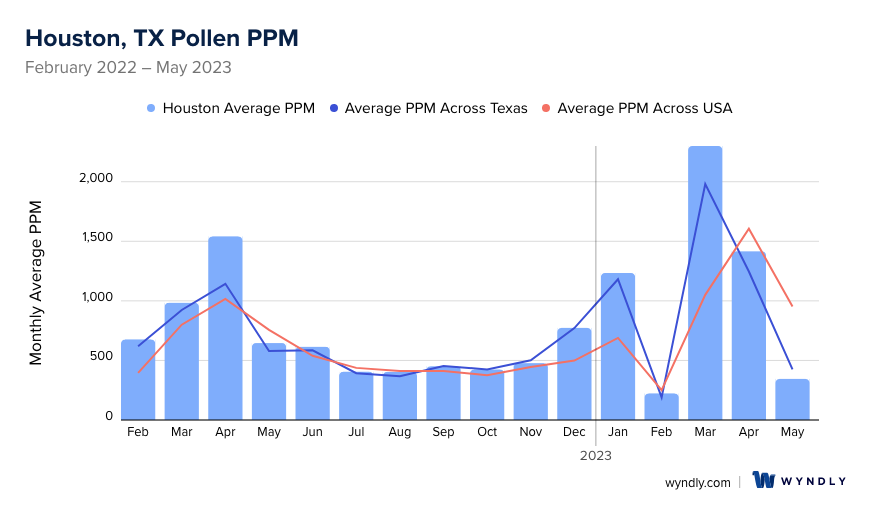
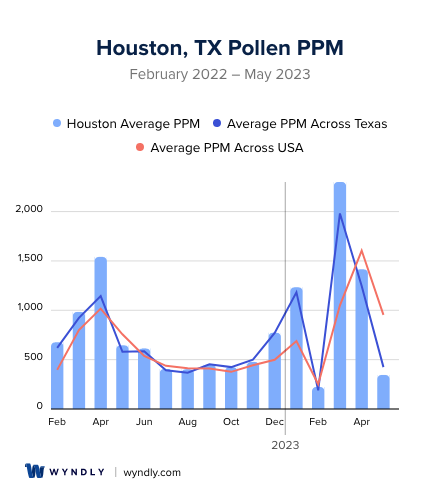
Houston, TX Pollen and Allergy Breakdown by Month
Grass
When is grass pollen highest in Houston, TX?
April has the highest grass pollen in Houston, TX with an average PPM of
When is grass pollen lowest in Houston, TX?
December has the lowest grass pollen in Houston, TX with an average PPM of
Tree
When is tree pollen highest in Houston, TX?
March has the highest tree pollen in Houston, TX with an average PPM of
When is tree pollen lowest in Houston, TX?
July has the lowest tree pollen in Houston, TX with an average PPM of
Weed
When is weed pollen highest in Houston, TX?
June has the highest weed pollen in Houston, TX with an average PPM of
When is weed pollen lowest in Houston, TX?
February has the lowest weed pollen in Houston, TX with an average PPM of
Houston, TX Pollen Monthly Breakdown by Pollen Type
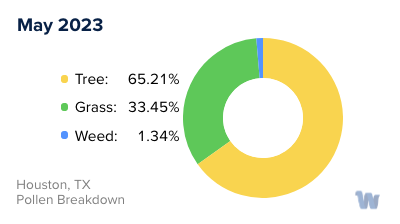
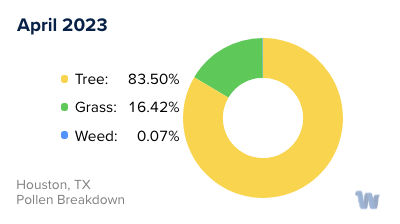
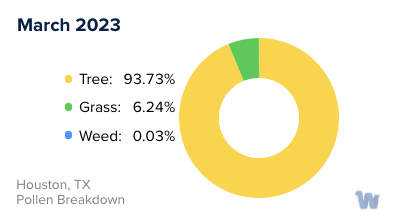
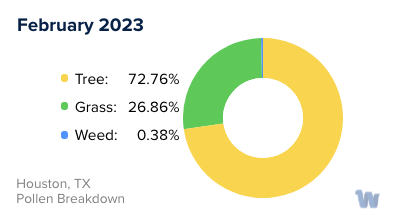
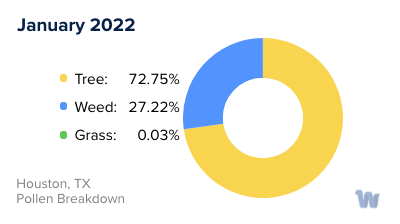
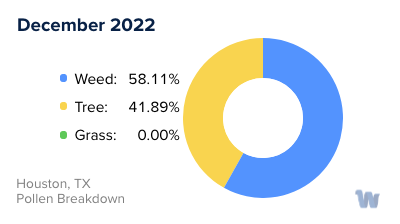
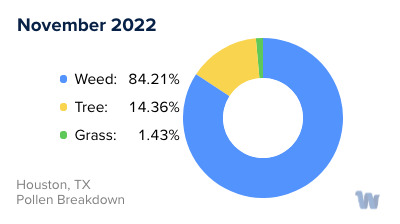
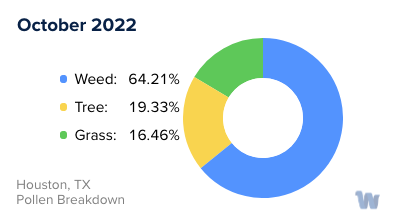
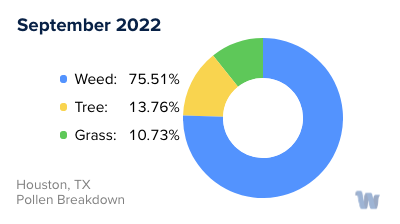
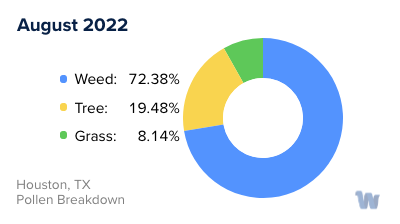
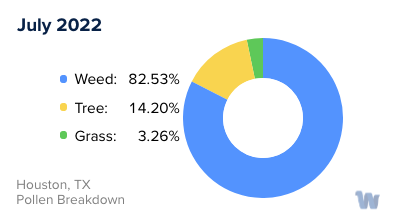
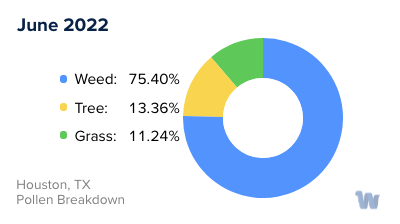

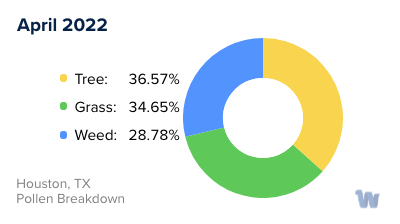
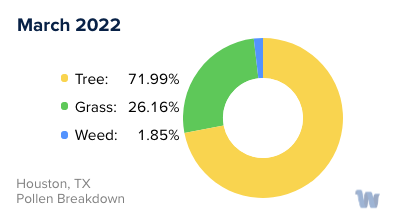
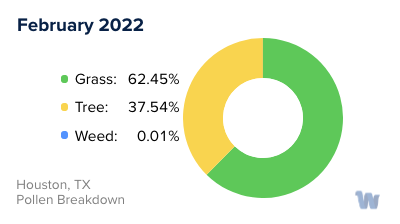
Pollen and Hay Fever in Houston, TX
Welcome, Houstonians! As summer unfolds in the Bayou City, so does the annual dance of pollen, bringing with it a symphony of sneezes for many of us. Let's take a closer look at the invisible culprits – pollen – and understand how they contribute to hay fever.
Pollen is a powdery substance produced by plants for fertilization, often transported by wind, insects, or birds. Unfortunately, for many individuals, certain types of pollen can trigger an overactive immune response known as hay fever, or more technically, allergic rhinitis.
In Houston, several types of pollen can cause this reaction, but the most common culprits are tree, grass, and weed pollen. Each of these has its own 'peak season' when it's most likely to affect allergy sufferers.
Let's start with tree pollen. Oak, pine, and cedar trees are particularly generous pollen producers in our area. The season for tree pollen typically starts in late winter, usually around late February, and extends through spring until mid-May.
Next on the list is grass pollen. Bermuda grass, Bahia grass, and Timothy grass are among the most common in Houston and can cause quite a stir among allergy sufferers. Grass pollen season usually begins in late spring, around May, and can last until early summer.
Last, but certainly not least, is weed pollen. Ragweed is the main offender here, although other weeds such as lamb's quarters and pigweed also contribute. Weed pollen season often coincides with the end of summer and the arrival of fall, typically starting in late August and lasting until the first frost.
While these periods represent the typical pollen seasons in Houston, it's essential to remember that exact times can vary from year to year based on weather conditions. A warmer winter might bring an earlier start to the tree pollen season, for example, while a rainy spring could extend the grass pollen season.
Understanding the types of pollen and their seasons is the first step towards managing hay fever. Knowledge is power, Houston. Stay informed and stay ahead of the sneeze!.

